This article shines a light on the essential ABA goals for our little ones aged three, emphasizing how personalized treatment plans can truly make a difference. By focusing on key areas like communication, social skills, and independence, we can foster their growth in meaningful ways. 🌟
What really stands out are the individualized interventions and the involvement of caregivers. When we work together and establish structured routines, we create enriching learning experiences that can lead to wonderful developmental outcomes for our children. Let’s explore this journey together and see how we can support our kids every step of the way!
Understanding the unique developmental needs of three-year-olds is so important in the world of ABA therapy. Personalized goals not only cater to each child's individual strengths and challenges but also pave the way for significant progress in key areas like communication, social skills, and independence. But how can caregivers effectively navigate the complexities of these tailored interventions to foster growth and stability in their little ones?
Let’s explore nine essential ABA goals that can truly transform the developmental journey for young children. We’ll share insights and strategies that empower both kids and their families, making this journey a bit easier and more rewarding. We’re here to help you every step of the way!
At Rori Care - ABA Support, we understand how important personalized ABA goals for 3 year old are for their growth. Each treatment plan is crafted with care, following a thorough assessment to ensure that the objectives align with the ABA goals for 3 year old and meet the unique developmental needs of each child. This individualized approach not only boosts engagement but also drives significant progress in key areas like communication, social skills, and independence.
Did you know that customized treatment plans can lead to better outcomes? Studies reveal that video modeling methods have an impressive effectiveness score of 0.83 for children with autism spectrum disorder, especially when caregivers join in the modeling process. As one clinician beautifully put it, 'Customized ABA goals for 3 year old children are essential for promoting child development, as they enable focused interventions that align with each child's distinct strengths and challenges.'
Effective personalized ABA interventions have shown the ability to improve developmental milestones, supported by a substantial effect size of 0.81 from various studies. When caregivers are involved and empowered through education in ABA principles and strategies, the effectiveness of these plans is further enhanced. It's important to note that the success of video modeling can vary based on participant traits and desired outcomes, highlighting the need for tailored approaches in treatment.
Ultimately, this personalized care helps young individuals thrive in their daily environments. So, let’s explore this journey together! We’re here to help you every step of the way!

One of the primary ABA goals for 3 year old children in therapy is to enhance communication skills, which encompasses both expressive and receptive language development. Techniques like modeling, prompting, and reinforcement help encourage young children to use words, gestures, and other forms of communication effectively.
Caregivers play a crucial role in this journey! By understanding ABA principles and actively participating in their child's learning, they can provide consistent support at home. For instance, using visual aids and engaging in interactive play not only helps children express their needs and emotions more clearly but also enables caregivers to make informed choices that positively influence their little one's development.
This collaborative approach fosters improved behavioral outcomes and enhances overall family dynamics while supporting ABA goals for 3 year old. Let's explore this together and see how we can support our children in their growth!
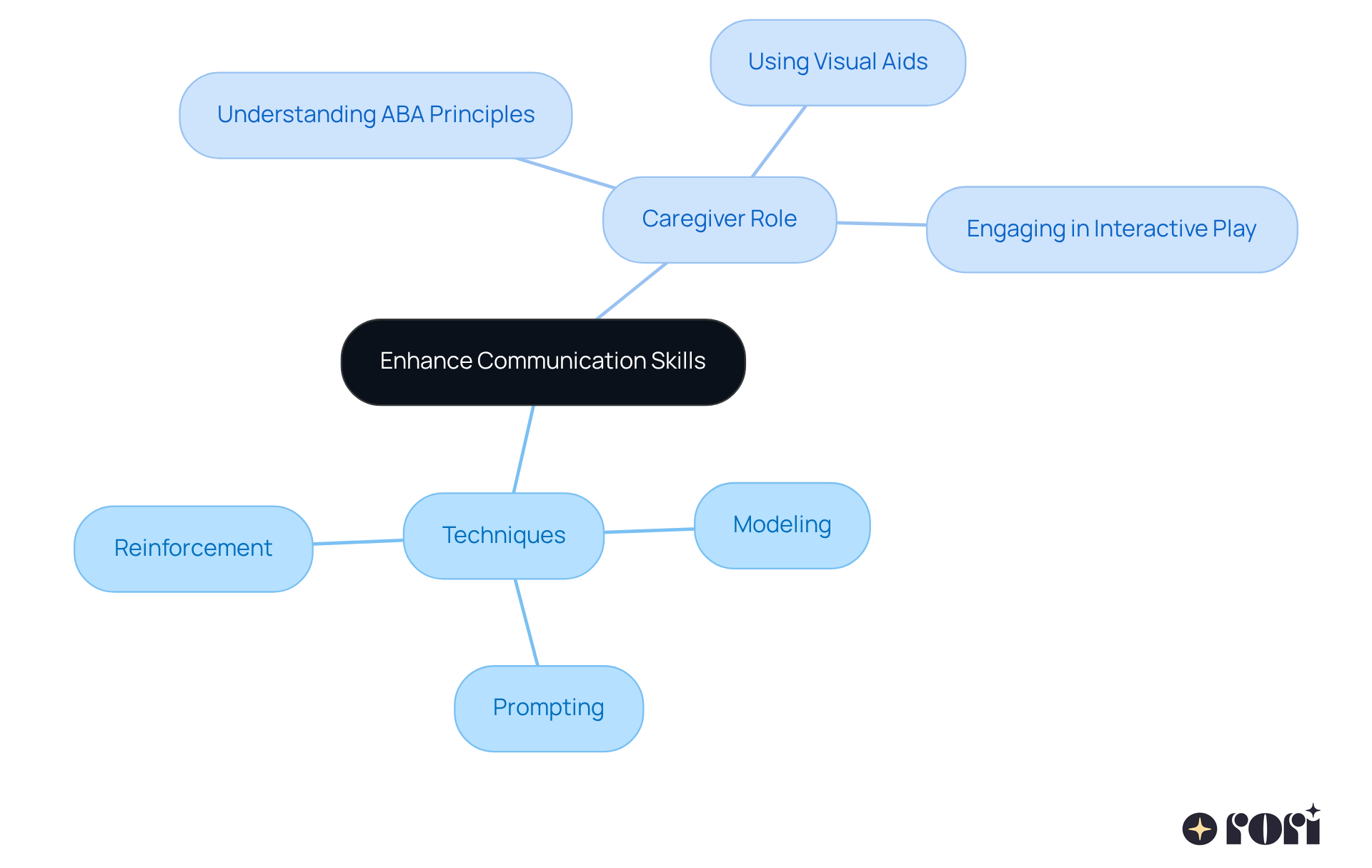
Enhancing social abilities is among the key ABA goals for 3-year-old children in therapy. It’s all about teaching kids how to start conversations, share, take turns, and respond to social cues. Engaging in activities like group play, role-playing, and organized games provides these young ones with wonderful opportunities to develop these skills in a nurturing environment. Research shows that kids who learn in supportive settings, where caregivers are involved and understand ABA principles, are better equipped to tackle social challenges—essential for their overall growth.
Benefits of Caregiver Education:
By nurturing positive social interactions, young children not only learn to form friendships but also enhance their ability to navigate various social situations. Child psychologists stress that social interactions in early childhood are crucial for emotional and cognitive development, laying a solid foundation for future success. So, incorporating group play into daily routines—with caregivers actively involved—can make a significant difference in the social skills of three-year-olds, particularly for those on the autism spectrum, as it aligns with ABA goals for 3-year-olds who may need extra support in developing these vital abilities. Let’s explore this together!
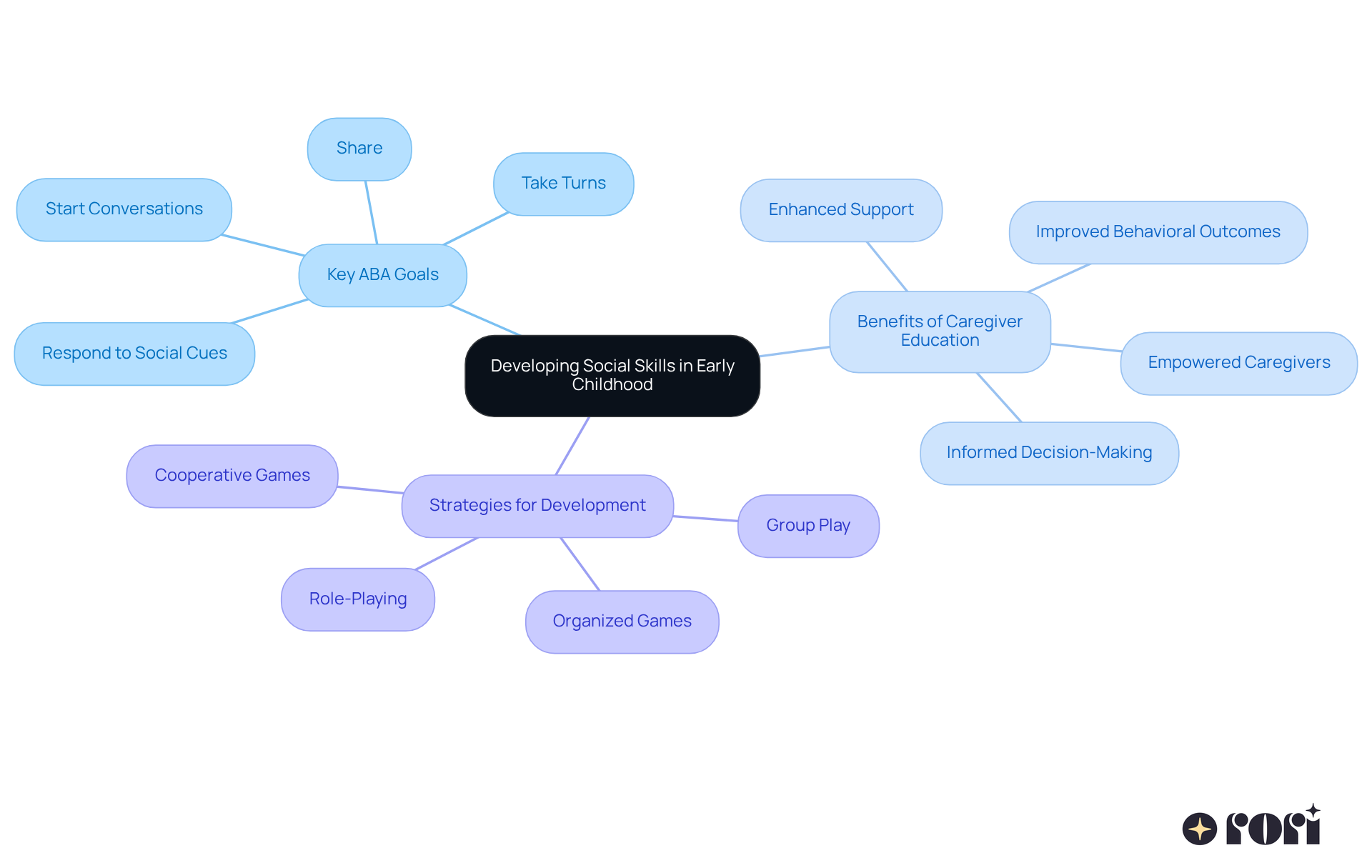
Creating daily routines is essential for achieving ABA goals for 3 year old therapy. It offers youngsters a predictable framework that significantly lessens anxiety and promotes a sense of security. Research shows that structured routines can lead to a notable decrease in anxiety levels among preschoolers, enhancing their overall well-being. Behavioral therapists emphasize that routines help young individuals understand what to expect during their day, which is essential for their emotional stability. Establishing consistent routines can create a sense of stability for individuals on the spectrum.
Using visual schedules and consistent reinforcement, therapists can effectively teach youngsters to navigate daily activities like mealtime, playtime, and personal hygiene. This organized approach not only encourages autonomy but also develops crucial life skills, enabling youngsters to handle their daily activities with confidence. As Rikki Rogers aptly states, 'Strength doesn't come from what you can do. It comes from overcoming the things you thought you couldn't.' This sentiment resonates deeply in the context of establishing routines, as young individuals learn to face daily challenges with resilience.
Incorporating successful strategies for teaching these routines can further enhance their effectiveness when aligned with ABA goals for 3 year old. For instance, using visual aids like picture schedules and social stories can clarify expectations, reducing anxiety and promoting independence. By fostering a consistent routine, parents and therapists can create a nurturing environment that supports the child's growth and development, ultimately paving the way for a brighter future. Let’s explore this together!

Enhancing motor abilities is such an important part of the ABA goals for 3 year old children, especially for our little ones! This includes both fine motor skills, like grasping and manipulating objects, and gross motor functions, such as running and jumping. Therapists use a variety of fun activities, from play-focused exercises to structured tasks, to help kids develop these skills.
For instance, activities like building with blocks or playing catch can really boost coordination and strength, which are vital for their overall growth. And here’s where you come in! Active involvement from caregivers is key. When caregivers are equipped with ABA principles, they can provide consistent support at home, which beautifully complements professional interventions.
This partnership not only leads to better outcomes in motor skills but also empowers you as caregivers. It boosts your confidence and helps you make informed choices that positively impact your child’s progress. So, let’s explore this journey together! We’re here to help you every step of the way!
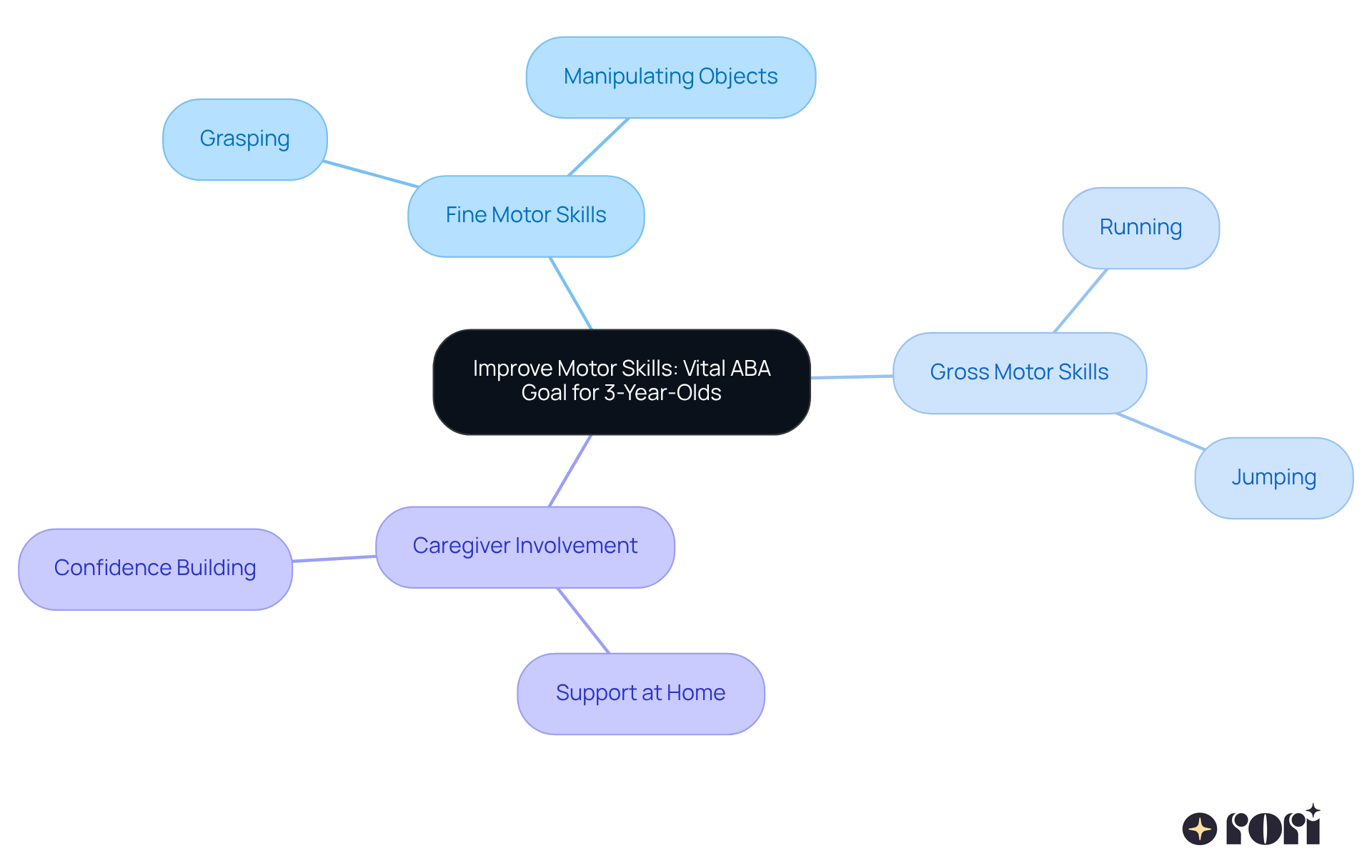
Encouraging self-sufficiency in three-year-olds is so important for fostering their independence! ABA therapy focuses on achieving ABA goals for 3 year old children by teaching them essential skills such as dressing, grooming, and feeding themselves. By breaking these tasks into manageable steps and using positive reinforcement, therapists guide little ones toward completing these activities on their own. This not only boosts their confidence but also sets the stage for even greater independence as they grow.
Child development specialists often highlight that independence is vital for building self-esteem and problem-solving skills. As Maria Montessori beautifully put it, education is a natural process that unfolds spontaneously in children. This really emphasizes the importance of letting them explore and learn at their own pace.
When it comes to teaching independence through ABA goals for 3 year old, effective strategies include:
These approaches not only help toddlers with autism develop essential daily living skills but also nurture a sense of accomplishment and self-reliance that’s crucial for their overall growth. Let’s explore this together and see how we can support our little ones on their journey to independence!
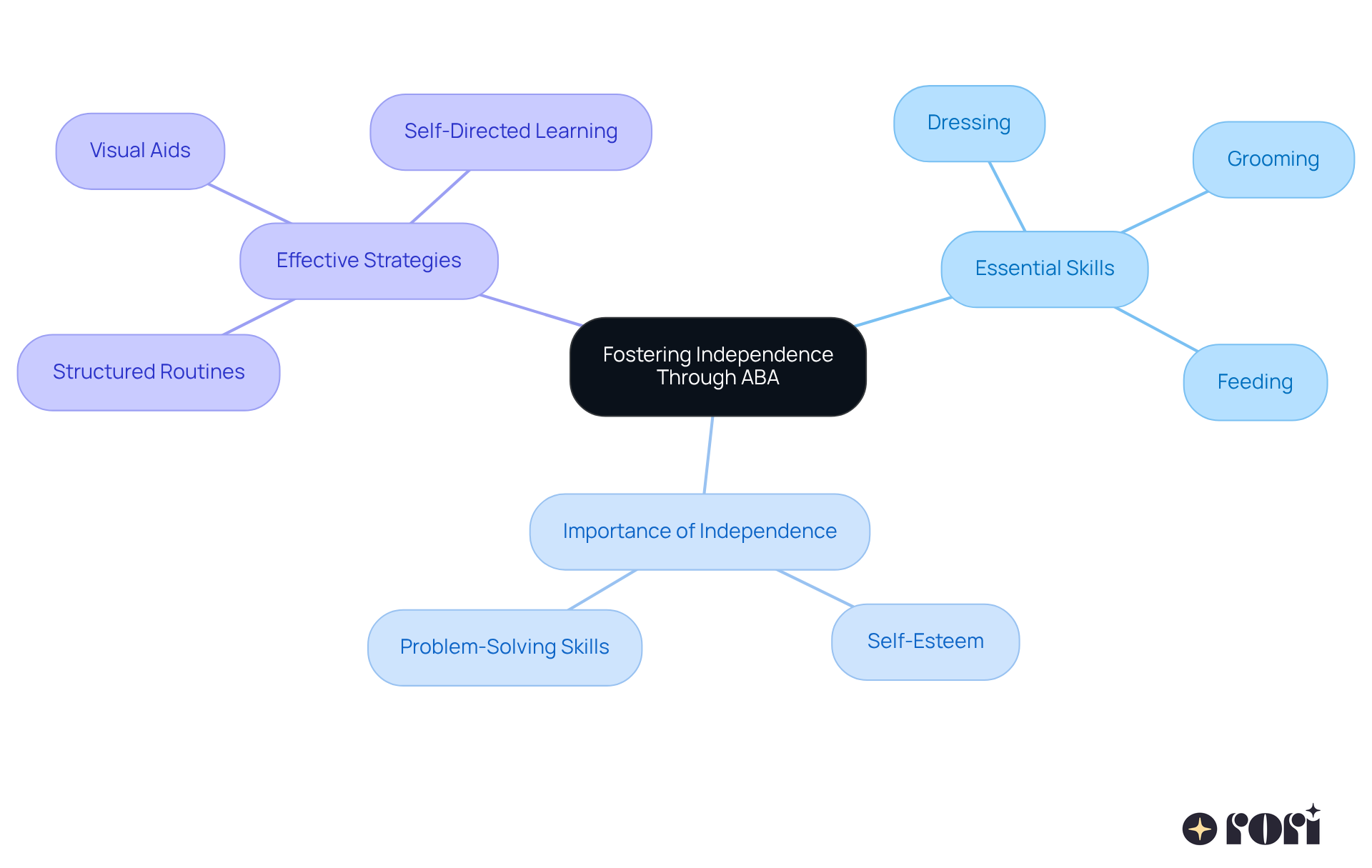
Enhancing emotional regulation is one of the essential ABA goals for 3-year-olds in ABA therapy. Through structured activities and modeling, little ones learn to recognize and handle their emotions effectively. For instance, using emotion charts helps them identify their feelings, while role-playing situations offers practical ways to express emotions in social settings. 🌈
Mindfulness practices, like deep breathing and soothing techniques, further boost emotional awareness, allowing young individuals to manage their feelings with greater ease. By nurturing this emotional awareness, children not only improve their interactions with peers and adults but also develop essential coping strategies that lead to more positive social experiences.
As experts highlight, emotional awareness in early childhood is crucial for building resilience and healthy relationships. This sets the stage for lifelong emotional well-being. Let’s explore this together and see how we can support our little ones on this journey!
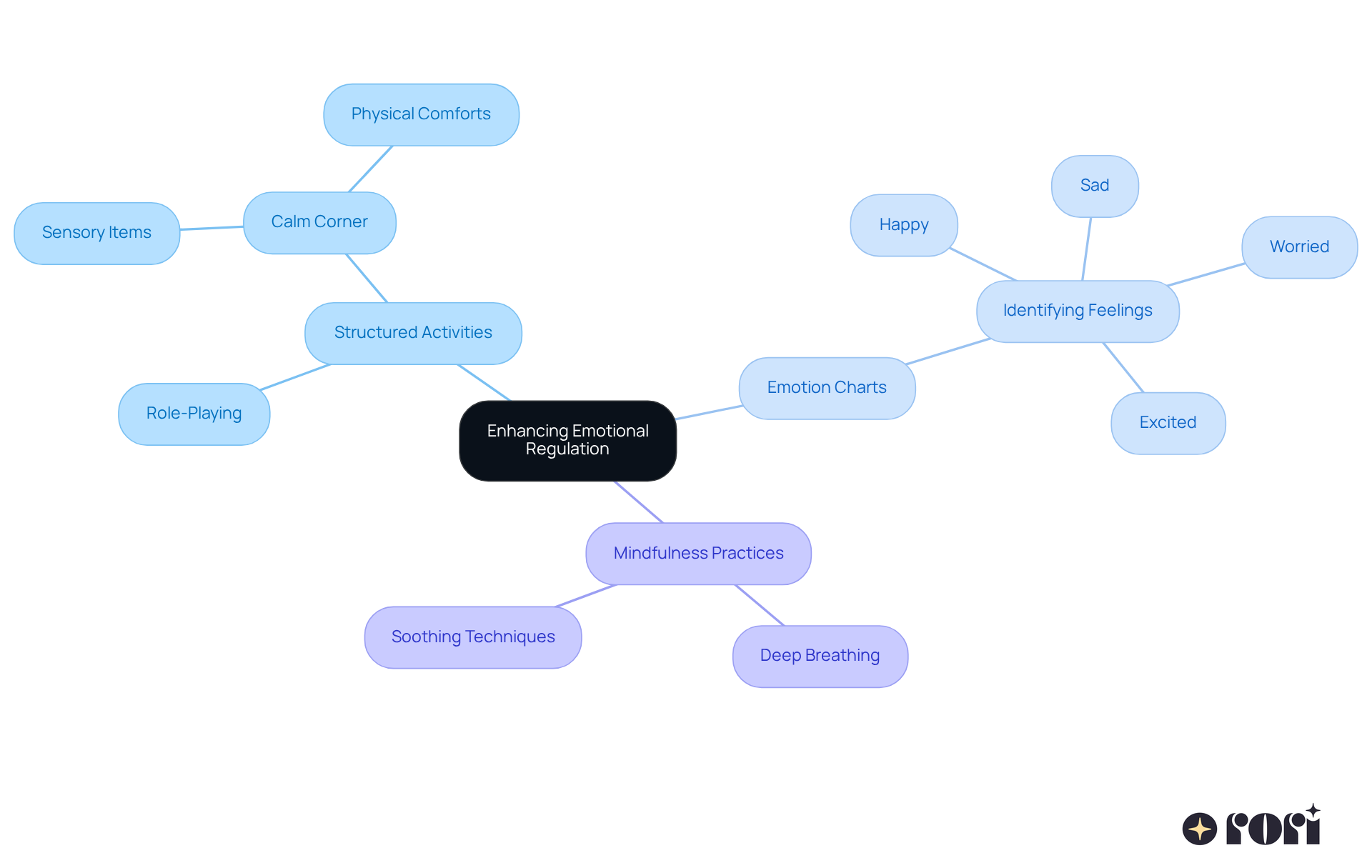
Developing play skills is crucial for encouraging interaction and learning in our little ones, particularly when addressing ABA goals for 3 year old children! 🌟 ABA therapy brings in play-based activities that really help boost social engagement, creativity, and problem-solving. Through techniques like modeling and guided play, therapists show kids how to share, take turns, and enjoy cooperative play together.
This approach not only enhances their play abilities but also provides parents with valuable strategies and ABA goals for 3 year old. This way, you can actively support your child’s behavioral goals through consistent involvement and data collection. By working on these play skills, children can form friendships and learn essential social norms in a fun and engaging way. Let’s explore this together and see how we can make playtime even more enjoyable for our kids!
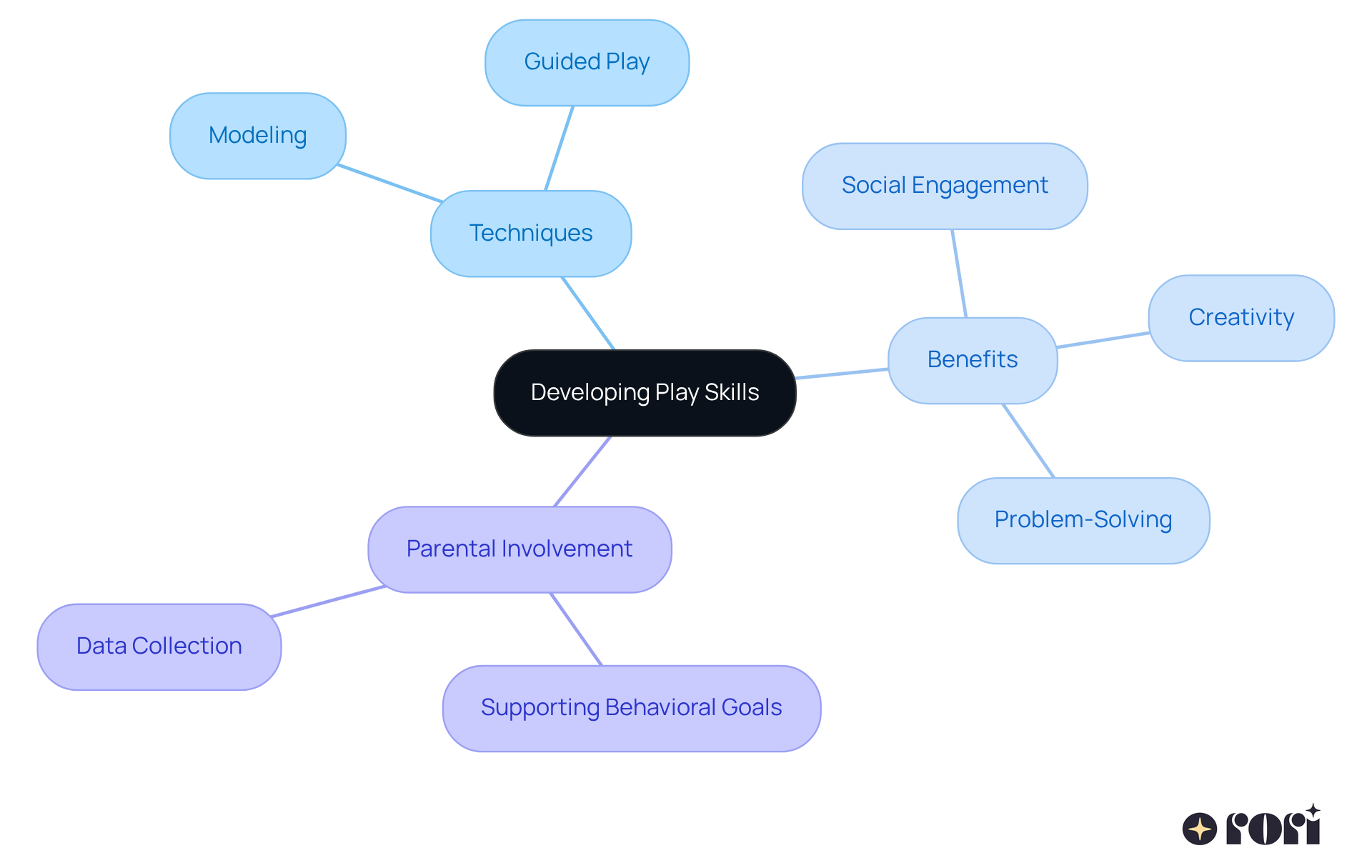
Promoting safety awareness is one of the important ABA goals for 3 year old children in therapy. Through fun lessons and engaging role-playing scenarios, children learn how to spot and respond to potential dangers. Using helpful tools like visual aids, social stories, and practice exercises, they grasp important safety concepts—like staying close to caregivers and distinguishing between safe and unsafe situations. By nurturing these vital skills, kids gain the confidence they need to explore their world more safely and independently, which aligns with ABA goals for 3 year old. Let’s explore this together!
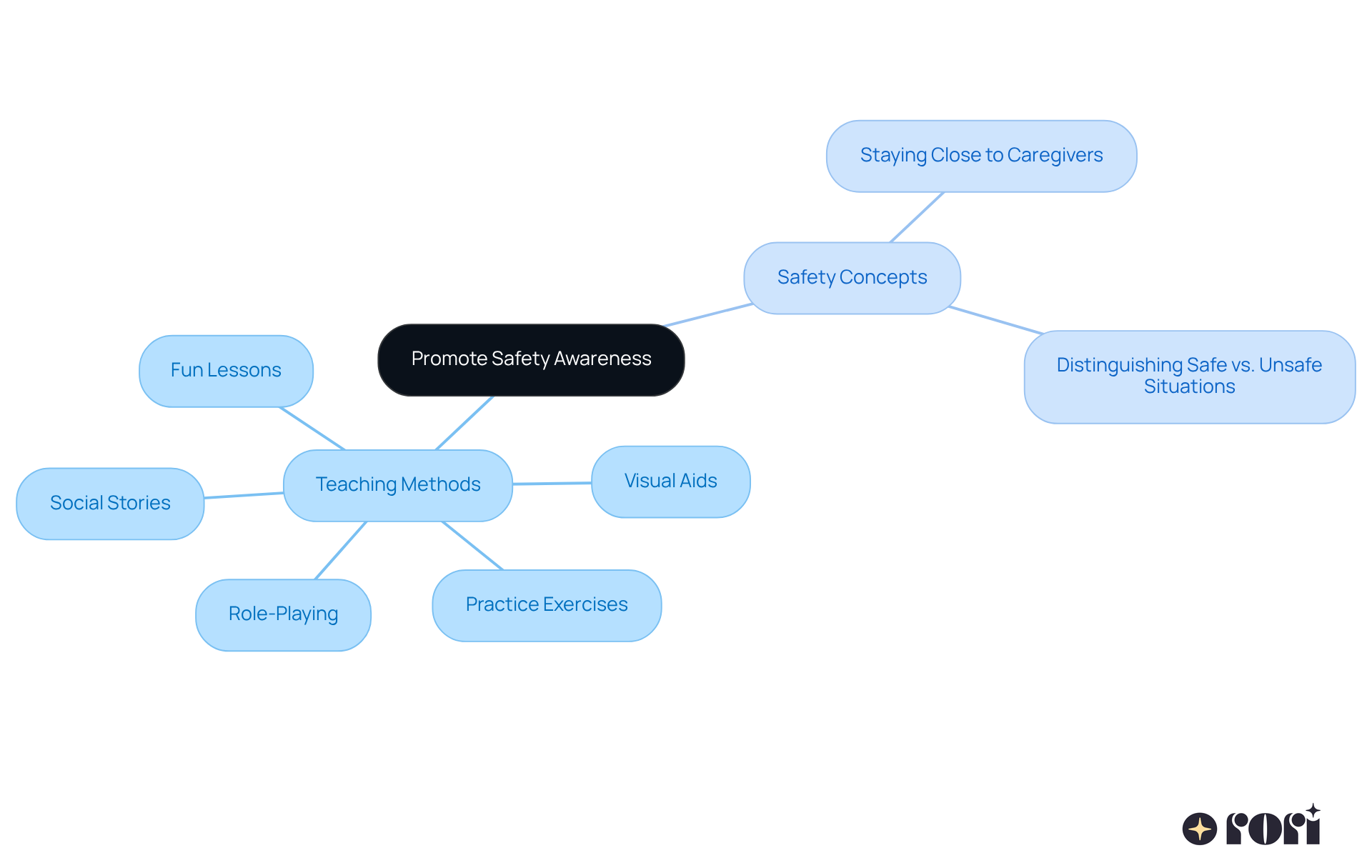
Encouraging family involvement is essential for achieving ABA goals for 3 year old outcomes! Parents and guardians are key players in enhancing the skills learned during treatment sessions. By teaming up with therapists, families can apply strategies at home, ensuring that skills carry over into different environments. Parent training is crucial for the success of ABA therapy, as it equips parents with the tools and resources necessary to achieve ABA goals for 3 year old children and support their development effectively.
This collaborative approach creates a nurturing environment that boosts growth and progress. Plus, it significantly enhances the effectiveness and sustainability of ABA outcomes. Studies show that when parents are actively involved in their child's therapy, kids with autism often see improvements in communication skills, social adaptability, and emotional regulation in relation to their ABA goals for 3 year old. When caregivers understand ABA principles and strategies, they feel empowered to make informed choices that positively impact their child's journey.
The knowledge gained through caregiver education not only builds confidence but also reduces stress and fosters a supportive family dynamic. By weaving ABA techniques into daily routines, parents can create a structured environment that promotes stability and predictability, further aiding their child's learning and behavioral progress. Let’s explore this together! We’re here to help you every step of the way!
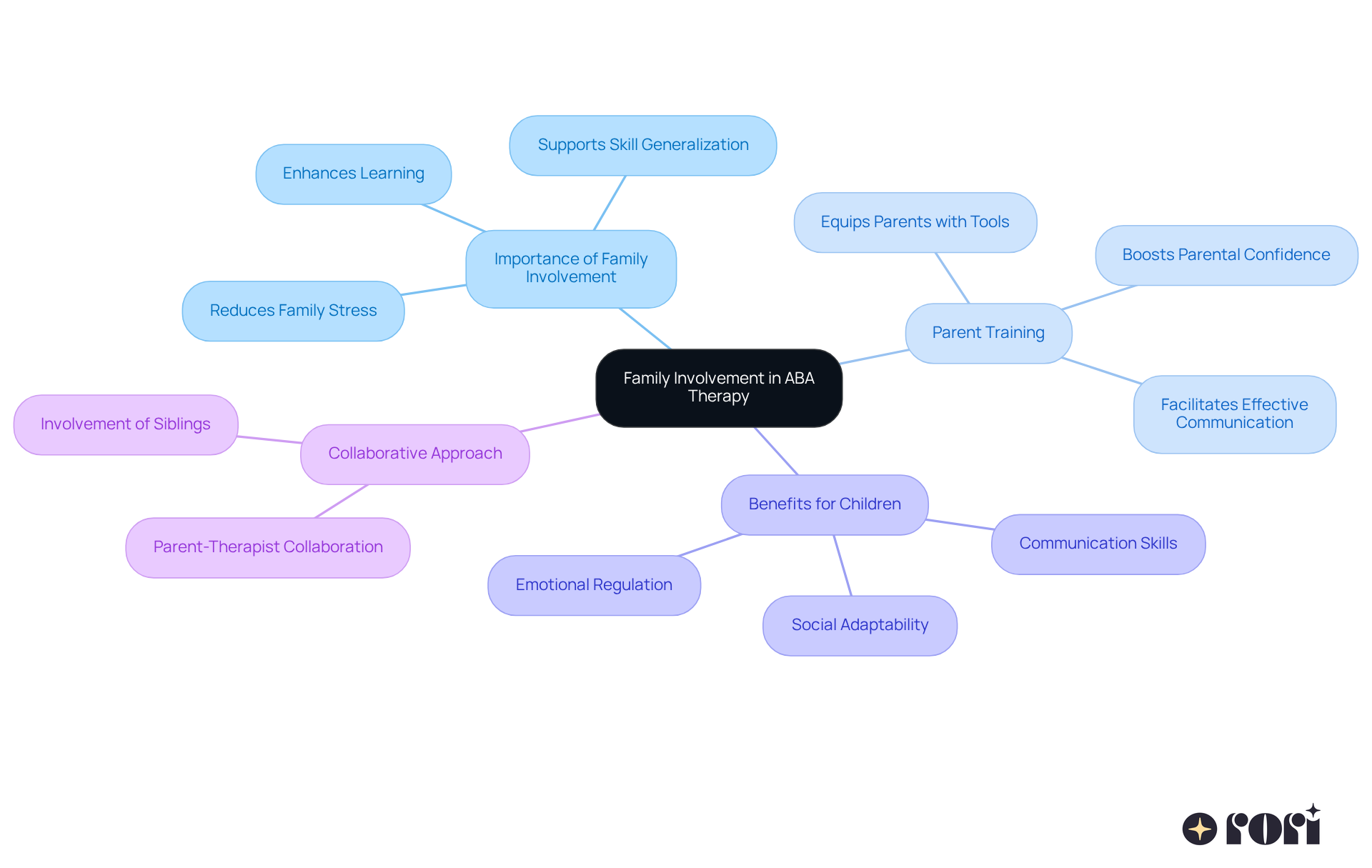
Personalized ABA goals for three-year-olds are so important for nurturing their growth and development! This tailored approach means we can meet each child's unique needs, leading to better outcomes in communication, social skills, and independence. By focusing on individualized treatment plans, caregivers can really support their children's progress, creating a warm environment that promotes learning and resilience.
The article highlights some essential ABA goals, like:
Each of these goals plays a significant role in a child's overall development, showing just how vital caregiver involvement and education are in the therapeutic process. This collaboration not only boosts the effectiveness of interventions but also empowers families to contribute positively to their child's journey.
Incorporating these goals into daily life is key for long-term success! By actively engaging in ABA strategies, families can create a structured and supportive environment that encourages growth and learning. Emphasizing the significance of personalized ABA therapy for young children can really pave the way for a brighter future, ensuring that each child has the tools they need to thrive in their daily lives. Let’s explore this together and make a difference for our little ones!
What is the focus of ABA therapy for 3-year-olds at Rori Care?
The focus of ABA therapy for 3-year-olds at Rori Care is to create personalized treatment plans that align with each child's unique developmental needs, enhancing areas such as communication, social skills, and independence.
Why are personalized ABA goals important for 3-year-olds?
Personalized ABA goals are important because they enable focused interventions that promote child development by addressing each child's distinct strengths and challenges, leading to better engagement and significant progress.
How effective are customized treatment plans in ABA therapy?
Customized treatment plans have shown to lead to better outcomes, with studies indicating an effectiveness score of 0.83 for video modeling methods in children with autism spectrum disorder, especially when caregivers are involved.
What role do caregivers play in the ABA therapy process?
Caregivers play a crucial role by understanding ABA principles and actively participating in their child's learning, which provides consistent support and enhances the effectiveness of the interventions.
What are some techniques used to enhance communication skills in 3-year-olds?
Techniques to enhance communication skills include modeling, prompting, and reinforcement, which encourage children to use words, gestures, and other forms of communication effectively.
What are the key social skills targeted in ABA therapy for 3-year-olds?
Key social skills targeted include starting conversations, sharing, taking turns, and responding to social cues, which are developed through activities like group play and role-playing.
How does caregiver education benefit the ABA therapy process?
Caregiver education enhances support, informs decision-making, improves behavioral outcomes, and empowers caregivers, which collectively boosts the effectiveness of the therapy and reduces stress within the family.
Why are social interactions important for young children in therapy?
Social interactions are crucial for emotional and cognitive development, laying a solid foundation for future success, and are particularly important for children on the autism spectrum to develop vital social skills.